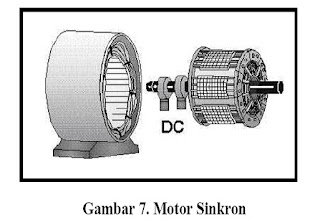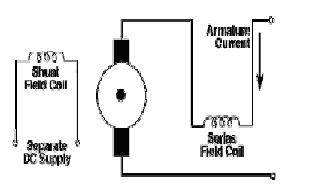Industrial Electric DC motors
Direct current motor, as the name implies, uses DC electricity flows. DC motors used on the specific use where
Starting the necessary high torque or acceleration of the equipment for a wide range of speeds.
Figure 3 shows a DC motor which has three main components: a

- Arctic terrain. In sederhada illustrated that the interaction of two magnetic poles will
cause the rotation of a DC motor. DC motor has a polar field
stationary and the moving dynamo bearing on the space between the polar magnetic field.
Simple DC motor has two field poles: a north pole and south pole. Line
magnetic energy increases across the openings between the poles from north to south.
For engines larger or more complex consists of one or more electromagnets.
Electromagnet to receive electricity from outside resources as a provider structure
field.
- Dinamo. If the inflow into the dynamo, then the flow will be an electromagnet.
A cylindrical dynamo, connected to the countershaft for driving
load. For the case of small DC motors, dynamos in rotating magnetic fields
formed by the poles, to the north and south magnetic poles changed its location. If
this happens, the current is turned to change the poles of north and south of the dynamo.
- Commutator. This component is mainly found in DC motors. Usefulness is
to reverse the direction of electric current in a dynamo. Commutator is also helpful in
transmission flows between the dynamo and resources.
The main advantages are as controller of DC motor speed, which is not
affect the quality of power supply. These motors can be controlled by regulating:
- Voltage dynamo - increases the voltage will increase the speed of dynamo
- Flow field - reducing the field current will increase the speed.
DC motors are available in many sizes, but its use is generally restricted
for multiple use of low-speed, low power consumption to moderate such as machine tools and rolling mills, because often there are problems with the electrical current direction of change in mechanical larger size. Also, the motor is restricted only for use in areas that are clean and not dangerous because the risk of sparks at the brush. DC motors are also relatively inexpensive compared to AC motors.
The relationship between speed, field flux and dynamo voltage shown in the following equation:
Electromagnetic force: E = KΦN
Torque: T = KΦIa
Where:
E = electromagnetic force developed at the dynamo terminals (volts)
Φ = flux field that is proportional to field current
N = speed in RPM (revolutions per minute)
T = electromagnetic torque
He = current dynamo
K = constant equation
The types of DC motors:
- DC motors separate power source / Separately Excited
If the field current is supplied from a separate source of DC motors it is called a separate power source /
separately excited.
- DC motors own resources / Self Excited: shunt motor
In the shunt motor, the field winding (shunt field) are connected in parallel with
dynamo coil (A) as shown in figure 4. Therefore the total current in the path represents the total flow and flow field dynamo.
- Constant speed in practice did not depend on the load (up to a certain torque
after its speed is reduced, see Figure 4) and therefore suitable for
commercial uses with low initial costs, such as machine tools.
- The speed can be controlled by placing prisoners in a series arrangement
by dynamo (reduced speed) or by putting detainees in the field current
(Velocity increases).
Industrial Automation Related Post :
1.
Industrial Electric DC Motor Types2.
Industrial Electric DC motors3.
Industrial Electric Motor4.
Industrial Automation






